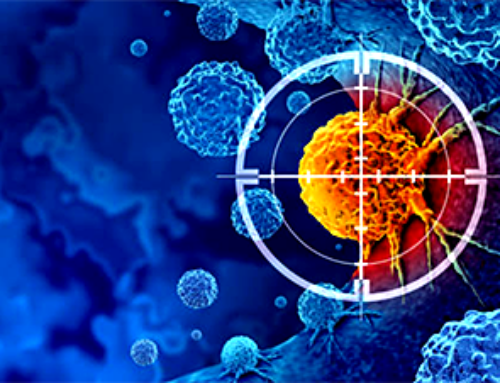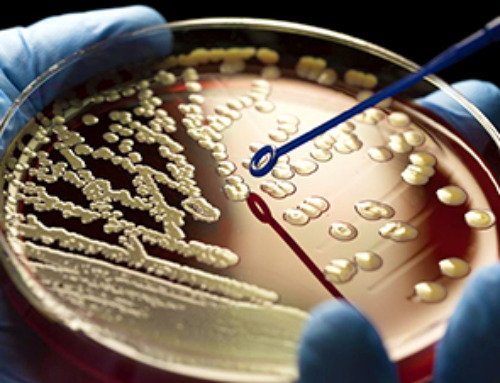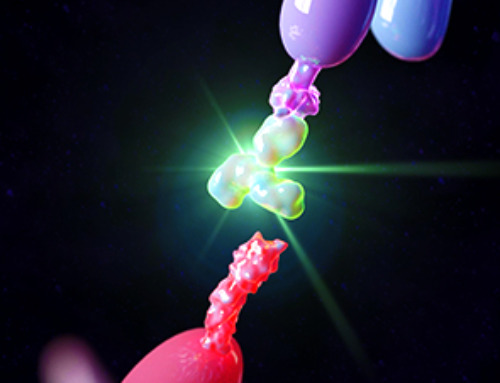| Multiple myeloma is an incurable bone marrow cancer that kills over 100,000 people every year. Known for its quick and deadly spread, this disease is one of the most challenging to address. As these cancer cells move through different parts of the body, they mutate, outpacing possible treatments. People diagnosed with severe multiple myeloma that is resistant to chemotherapy typically survive for only three to six months. Innovative therapies are desperately needed to prevent the spread of this disease and provide a fighting chance for those who suffer from it. | |
| Michael Mitchell, J. Peter and Geri Skirkanich Assistant Professor of Innovation in Bioengineering (BE), and Christian Figueroa-Espada, doctoral student in BE at the University of Pennsylvania School of Engineering and Applied Science, created an RNA nanoparticle therapy that makes it impossible for multiple myeloma to move and mutate. The treatment, described in their study published in PNAS (“In vivo bone marrow microenvironment siRNA delivery using lipid–polymer nanoparticles for multiple myeloma therapy”), turns off a cancer-attracting function in blood vessels, disabling the pathways through which multiple myeloma cells travel. |
| By shutting down this “chemical GPS” that induces the migration of cancer cells, the team’s therapy stops the spread of multiple myeloma, helping to eliminate it altogether. | |
| Endothelial cells, those that line blood vessels, produce a protein we need to survive. This protein, CyPA, is responsible for folding and transporting other proteins. It also activates T-cell responses when we get sick. | |
| However, when multiple myeloma is present, endothelial cells overexpress CyPA and secrete it into the blood vessels where its functions become malignant. Here, CyPA is a chemo-attractant, meaning it pulls multiple myeloma cells from the bone marrow into the blood vessels where they travel quickly to other bones in the body. | |
| “To stop the spread, we aimed to turn off this function of CyPA using RNA therapy, targeting the microenvironment of the cancer instead of the cancer cell itself,” says Mitchell. “But getting nucleic acids into the marrow was challenging due to the complex biological barriers.” | |
| To get the RNA into the hard-to-reach bone marrow, the team needed to redesign the traditional delivery vehicle for the lipid nanoparticle. | |
| “We designed a new hybrid nanoparticle that could deliver small interfering RNA (siRNA) to endothelial cells,” says Figueroa-Espada. “The siRNA stops cells from producing CyPA. When tested in vitro, the therapy prevented the spread of cancer cells. When tested in mice, both alone and in combination with chemotherapies, our therapy was able to decrease the size of tumors, extend survival rates and decrease the cancer’s resistance to chemotherapy.” | |
| “This work can help improve current treatments for multiple myeloma as well as other cancers that spread through the blood vessels,” adds Mitchell. “Using our platform for targeted nanoparticle development, we are looking forward to investigating other cancers and diseases where CyPA is overexpressed.” | |
| By creating a roadblock in cancer’s commute through the body, the Penn Engineering team is removing a longstanding barrier in the treatment of multiple myeloma, providing real hope for people diagnosed with this disease. | |
| In future work, the team plans to investigate silencing additional functions in the microenvironments of cancers to better overcome drug resistance, cancer initiation, and metastasis. They are currently working with Ruben Carrasco, Professor of Pathology at the Dana-Farber Cancer Institute and co-corresponding author of this study, to identify potential targets for this kind of therapy. Once RNA nanoparticle therapy is proven safe in larger animals, this proof-of-concept study can move forward to clinical trials. |
| Source: By Melissa Pappas, University of Pennsylvania (Note: Content may be edited for style and length) |
News
Platelet-inspired nanoparticles could improve treatment of inflammatory diseases
Scientists have developed platelet-inspired nanoparticles that deliver anti-inflammatory drugs directly to brain-computer interface implants, doubling their effectiveness. Scientists have found a way to improve the performance of brain-computer interface (BCI) electrodes by delivering anti-inflammatory drugs directly [...]
After 150 years, a new chapter in cancer therapy is finally beginning
For decades, researchers have been looking for ways to destroy cancer cells in a targeted manner without further weakening the body. But for many patients whose immune system is severely impaired by chemotherapy or radiation, [...]
Older chemical libraries show promise for fighting resistant strains of COVID-19 virus
SARS‑CoV‑2, the virus that causes COVID-19, continues to mutate, with some newer strains becoming less responsive to current antiviral treatments like Paxlovid. Now, University of California San Diego scientists and an international team of [...]
Lower doses of immunotherapy for skin cancer give better results, study suggests
According to a new study, lower doses of approved immunotherapy for malignant melanoma can give better results against tumors, while reducing side effects. This is reported by researchers at Karolinska Institutet in the Journal of the National [...]
Researchers highlight five pathways through which microplastics can harm the brain
Microplastics could be fueling neurodegenerative diseases like Alzheimer's and Parkinson's, with a new study highlighting five ways microplastics can trigger inflammation and damage in the brain. More than 57 million people live with dementia, [...]
Tiny Metal Nanodots Obliterate Cancer Cells While Largely Sparing Healthy Tissue
Scientists have developed tiny metal-oxide particles that push cancer cells past their stress limits while sparing healthy tissue. An international team led by RMIT University has developed tiny particles called nanodots, crafted from a metallic compound, [...]
Gold Nanoclusters Could Supercharge Quantum Computers
Researchers found that gold “super atoms” can behave like the atoms in top-tier quantum systems—only far easier to scale. These tiny clusters can be customized at the molecular level, offering a powerful, tunable foundation [...]
A single shot of HPV vaccine may be enough to fight cervical cancer, study finds
WASHINGTON -- A single HPV vaccination appears just as effective as two doses at preventing the viral infection that causes cervical cancer, researchers reported Wednesday. HPV, or human papillomavirus, is very common and spread [...]
New technique overcomes technological barrier in 3D brain imaging
Scientists at the Swiss Light Source SLS have succeeded in mapping a piece of brain tissue in 3D at unprecedented resolution using X-rays, non-destructively. The breakthrough overcomes a long-standing technological barrier that had limited [...]
Scientists Uncover Hidden Blood Pattern in Long COVID
Researchers found persistent microclot and NET structures in Long COVID blood that may explain long-lasting symptoms. Researchers examining Long COVID have identified a structural connection between circulating microclots and neutrophil extracellular traps (NETs). The [...]
This Cellular Trick Helps Cancer Spread, but Could Also Stop It
Groups of normal cbiells can sense far into their surroundings, helping explain cancer cell migration. Understanding this ability could lead to new ways to limit tumor spread. The tale of the princess and the [...]
New mRNA therapy targets drug-resistant pneumonia
Bacteria that multiply on surfaces are a major headache in health care when they gain a foothold on, for example, implants or in catheters. Researchers at Chalmers University of Technology in Sweden have found [...]
Current Heart Health Guidelines Are Failing To Catch a Deadly Genetic Killer
New research reveals that standard screening misses most people with a common inherited cholesterol disorder. A Mayo Clinic study reports that current genetic screening guidelines overlook most people who have familial hypercholesterolemia, an inherited disorder that [...]
Scientists Identify the Evolutionary “Purpose” of Consciousness
Summary: Researchers at Ruhr University Bochum explore why consciousness evolved and why different species developed it in distinct ways. By comparing humans with birds, they show that complex awareness may arise through different neural architectures yet [...]
Novel mRNA therapy curbs antibiotic-resistant infections in preclinical lung models
Researchers at the Icahn School of Medicine at Mount Sinai and collaborators have reported early success with a novel mRNA-based therapy designed to combat antibiotic-resistant bacteria. The findings, published in Nature Biotechnology, show that in [...]
New skin-permeable polymer delivers insulin without needles
A breakthrough zwitterionic polymer slips through the skin’s toughest barriers, carrying insulin deep into tissue and normalizing blood sugar, offering patients a painless alternative to daily injections. A recent study published in the journal Nature examines [...]





















